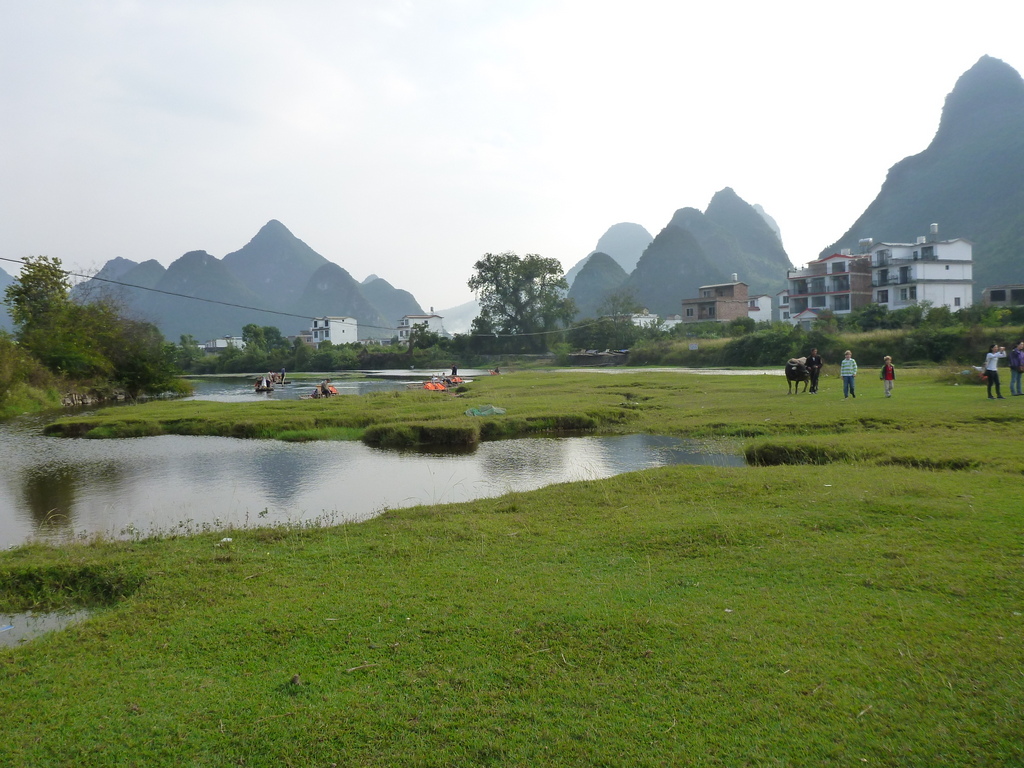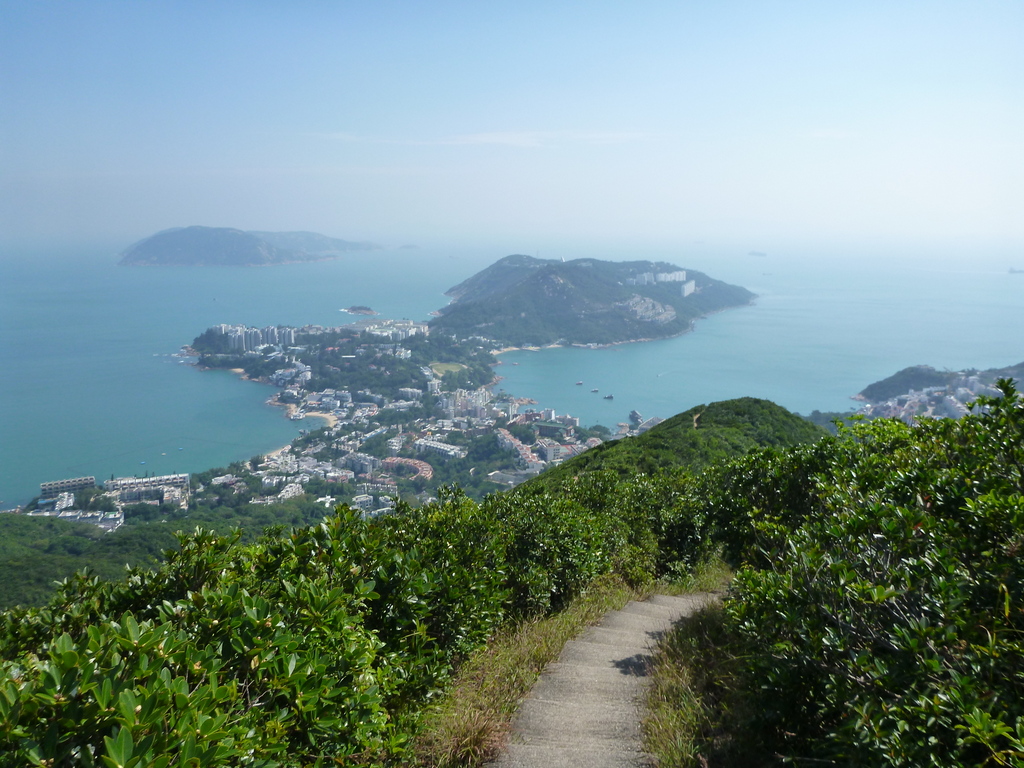After exploring some of large cities in China (see Exploring China’s Beauty and History Part 1), I was ready to see some lesser known and less populated parts. I also felt more comfortable getting around and traveling on my own in China. I was rewarded with seeing some ridiculous landscapes that I could have never imagined.
From Chengdu, my next stop was southeast to Zhangjiajie, a National Park in the Hunan province that inspired the landscape of Avatar. Much of the park is made of limestone with snaking rivers in between. The rivers eroded the land beneath the limestone, causing it fall in on itself. As a result, huge vertical columns remain, jutting into the sky up to 3500 feet! It’s a spectacular phenomenon. Well-built trails weave around the park, some below the columns along the river, some above, and some leading up on top of a column. I spent two days exploring the stone forest on my own. Check out the video below.
I continued southeast to an old town built along a river called Fenghuang (meaning Phoenix in Chinese). The old part of the town houses many traditional Chinese buildings. Along the river are small canoes, some with Miao women singing hoping for a reply. The women sing and a man will sing back as a reply. They will continue singing back and forth as a courting ritual. Fenghuang is a beautiful town in the process of becoming overrun by tourists. Though it looks quite traditional along the river, at night the streets are lined with bars and clubs, many which are packed with students from schools around the area. I was fortunate to meet Adria and Albert from Barcelona and their Chinese friend Nana on the bus to Fenghuang. I followed them to their guesthouse and we explored the town together. For me, Fenghuang was a short, one night stop on my way to Guilin.
Guilin is a beautiful tourist city, known for its hilly landscape. The famous Li River, which is depicted on the back of a 20 Yuan note, runs between Guilin and Yongshuo. I took a bamboo boat cruise along the Li River and was rewarded with picturesque rounded mountains lining the river. We also took a trip to the smaller Dragon river. There’s a picture from the Dragon River that’s included as a desktop background on Windows.
We also viewed a unique fishing style that the locals used to use. Over four years, a fisherman would train a cormorant bird to follow his orders. He ties a strong around the bottom of the long neck and gives the command to catch a fish. The bird dives under the water and emerges less than a minute later with a large fish in its mouth. It tries to swallow it, but the string prevents the neck from expanding. The fisherman grabs the bird and deposits the fish into a bucket. He did this three times in minutes.
From Guilin, I took an overnight sleeper train to Shenzhen, a short walk across the border to Hong Kong. The sleeper trains are actually quite comfortable, similar to a hostel dorm bed, just less room. I slept like a baby. Unfortunately, I didn’t know that I took an unnecessary risk in eating dinner off the street before I left Guilin. I woke up in a sweat and felt nauseous and achy. I didn’t want to move.
Unfortunately, I had a long morning ahead of me. I had to exit the train with all of my stuff and walk to the border of Hong Kong. From there I had to go through customs. I was standing in line in a cold sweat at the peak of my food sickness waiting to see the Hong Kong customs officer to get a stamp. I was nervous that I might have to run to a toilet (there were none around) to vomit or I would be flagged and quarantined. I swallowed and continued trying to act as natural as possible. I got through. Next, I had to figure out how to navigate the subway trains in Hong Kong and get to an apartment of a traveler I met at Zhangjiajie when all I wanted to do was lay down. Fortunately, the worst of the sickness was behind me and I started feeling better. It took me about two hours to find the apartment, and I spent the rest of the day and night resting.
The next day, I felt great. My friend, Gayble and I hiked around the green and secluded mountain trails of Hong Kong and explored the city. I was very impressed with Hong Kong. I used to think it was only a big city. But the territory of Hong Kong includes really nice rolling hills and nature preserves. The city is clean, unpolluted, and the sun shines, unlike many of the other places I had visited in China. The nightlife includes a pleasant mix of western and eastern cultures. Gayble and I decided to pop into a rock bar, where a Chinese band was playing classic rock songs. We didn’t stay out too late because I had a flight early the next day.
From Hong Kong, about a month and a half after leaving South Korea, I flew back to visit my girlfriend Hanna for 10 days, whom I met while traveling (read the full story here). We had a wonderful time together in Seoul and even made it out to Sokcho, on the eastern coast. It’s a tourist city next to Seoraksan National Park, known as the most beautiful and popular hiking in South Korea.
When I returned back to Hong Kong, I immediately took a short flight to Kunming, located in the Southwestern Yunnan province. Yunnan is one of the most beautiful provinces in China with Tibet and the Himalayas to the west and Thailand, Burma, Laos, and Vietnam to the south. It’s also the most ethnically and biologically diverse province in China. The temperature stays pretty warm all year, and it gets plenty of sunshine.
I had my sights set on Tiger Leaping Gorge, a two day hike situated between Lijiang and Shangrila (yes, that’s the name of the town). The name Tiger Leaping Gorge comes from an old tale about a hunter chasing a tiger. The hunter tracked the tiger all the way to the narrowest part of the canyon, at which point, the tiger leaped across the raging class 5+ river to the other side of the gorge, escaping the hunter. The “high path” traverses a steep slope on one side of the canyon through small villages along the way. In each village is a well-equipped guesthouse or two where you can stay for the night if you get tired. I met a young Israeli couple at the start of the trail, and we took the trail slowly, enjoying the sites. At the Halfway Guesthouse, I found the nicest view of any toilet I’ve seen. While doing your business, you can enjoy an open view of the whole gorge!
After the hike, I took a week to relax in the old, sunny, and beautiful, but touristy mountain towns of Lijiang and Dali. Sadly these were my last few days in China. I was off heading south to a new part of Asia, where I could see a huge change as soon as I crossed the border. I went from the most populous country in the world to one of the poorest and least developed, Laos.
After a month and a half in China, I really got to appreciate the size and scale of the country. Though I got to see a lot, it was only a small portion of the extremely diverse landscapes and cultures of China. It really is a beautiful and unique country that I have a new appreciation for. Though it was a little intimidating to travel around in the beginning, I found China to be safe, accessible, cheap, and pretty tourist friendly once you get into the swing of things.
Do you think you could handle traveling in China? Which part of traveling in China would be the scariest for you (public transportation, taxis, food, safety, etc…)?





 I'm a travel junkie with an IT background. I backpacked around the world for 14 months creating adventures and learning. On this blog, you'll find stories and money saving travel tips that will help you make your travel dream a reality. Enjoy! Feel free to visit my social networking profiles below or my
I'm a travel junkie with an IT background. I backpacked around the world for 14 months creating adventures and learning. On this blog, you'll find stories and money saving travel tips that will help you make your travel dream a reality. Enjoy! Feel free to visit my social networking profiles below or my 



{ 1 trackback }